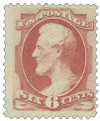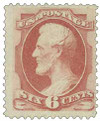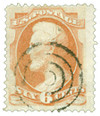
# 159 - 1873 6c Lincoln, dull pink
1873 6¢ Lincoln
Continental Bank Note Printing
Earliest Known Use: June 8, 1873
Quantity issued: 38,311,500 (estimate)
Printed by: Continental Bank Note Company
Method: Flat plate
Watermark: None
Perforation: 12
Color: Dull pink
Cumberland Gap National Historical Park
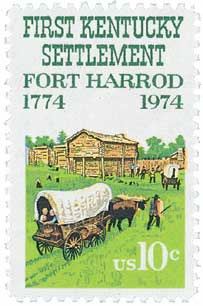
Cumberland Gap National Historical Park was established on June 11, 1940, along the Kentucky-Virginia border. The park preserves and honors the “first great gateway to the West.”
Located one-quarter mile north of where the current-day Kentucky, Virginia, and Tennessee state borders meet, the Cumberland Gap is a natural narrow pass through the Cumberland Mountains in the southern Appalachians. It is the only natural break in the 100-mile-long Cumberland Mountain ridge.
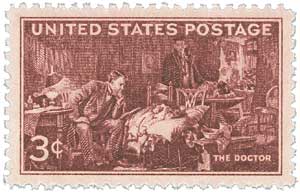
Called the “first great gateway to the West,” the Cumberland Gap was used by Native American Tribes long before European settlers traversed the narrow pass. By the mid- 1700s, colonists to the east of the mountains were eager to explore the region in search of new lands to hunt, cultivate, and settle. It’s likely that many hunters, trappers, and traders had explored the region before it was formally investigated. But Dr. Thomas Walker is often credited with the Gap’s discovery during an expedition in the Spring of 1750.
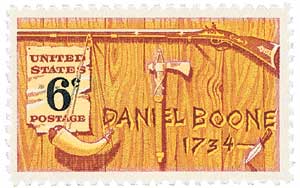
Exploration of the Cumberland Gap continued, and a trader named John Finley accidentally stumbled upon the blue grass region shortly after Walker’s expedition. The outbreak of the French and Indian War kept him from pursuing further exploration, but he discussed his discovery with friends and fellow soldiers during the war, including Daniel Boone. After a failed attempt to find the pass in 1767, Boone searched for it again in 1769 with Finley. They followed the gap into Kentucky, but conflicts with Indian tribes, adverse weather conditions, and supply shortages worked against the explorers. Most of the party gave up, eventually leaving only Boone in the wilderness. Later joined by his brother, the pair learned the lands and the ways of the Natives. When they returned east in 1773, their stories roused curiosity of adventurers and spectators.
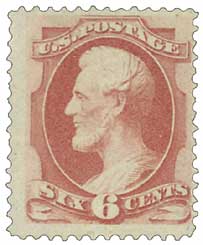
Following negotiations resulting in the Treaty of Sycamore Shoals, the Cherokee, with the exception of Chief Dragging-Canoe, agreed to sell a large portion of now-central Kentucky to the Transylvania Land Company. A mass migration through the Cumberland Gap followed. Settlements banded together to fight off native American raids and built forts for protection in the shadow of the Revolution. Despite constant setbacks, the population of Kentucky settlers quadrupled between 1775 and 1783. By the end of 1794, two hundred families had purchased land west of the mountains. Expansion increased dramatically through the end of the 18th century, with some 300,000 immigrants finding their way through the Cumberland Gap.
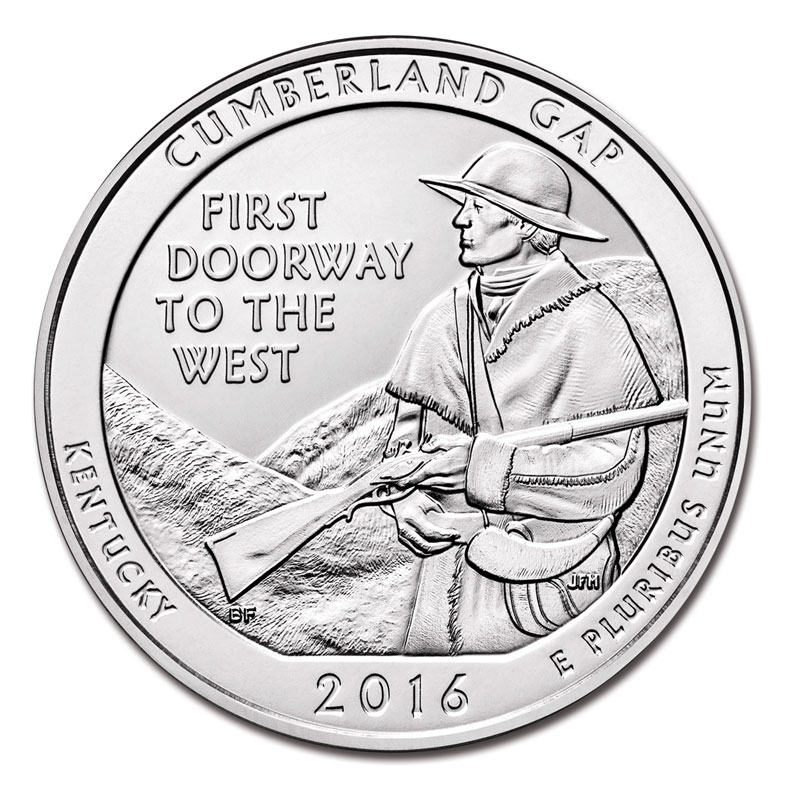
After the Civil War, the Cumberland Gap became an abandoned wasteland of military trenches and beaten up roads littered with tree stumps. The discovery of natural resources brought focus back to the area in the late 1800s. However, it was not until 1922 that a park was considered. The idea bounced around local governments for almost two decades before the creation of a national historical park was authorized. The park was dedicated on June 11, 1940.
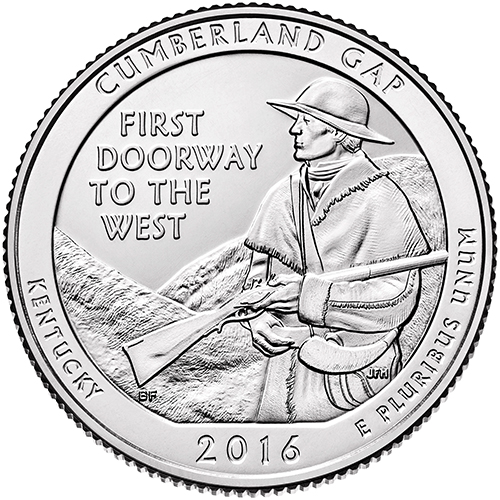
Since its establishment, the park has seen an abundance of forest regrowth following 175 years of timber industry. Routes, no more sophisticated than forest trails and wagon roads, are maintained throughout the pass. The roadbed of former US Highway 25E was even restored to a dirt path, being replaced by the underground Cumberland Gap Tunnel in 1996.
The National Park Service and volunteer groups are vigilant in their efforts to maintain the park in its natural state for the local flora and fauna, and for the generations of visitors who come to see the breathtaking views and to experience the history associated with the Cumberland Gap.
1873 6¢ Lincoln
Continental Bank Note Printing
Earliest Known Use: June 8, 1873
Quantity issued: 38,311,500 (estimate)
Printed by: Continental Bank Note Company
Method: Flat plate
Watermark: None
Perforation: 12
Color: Dull pink
Cumberland Gap National Historical Park

Cumberland Gap National Historical Park was established on June 11, 1940, along the Kentucky-Virginia border. The park preserves and honors the “first great gateway to the West.”
Located one-quarter mile north of where the current-day Kentucky, Virginia, and Tennessee state borders meet, the Cumberland Gap is a natural narrow pass through the Cumberland Mountains in the southern Appalachians. It is the only natural break in the 100-mile-long Cumberland Mountain ridge.

Called the “first great gateway to the West,” the Cumberland Gap was used by Native American Tribes long before European settlers traversed the narrow pass. By the mid- 1700s, colonists to the east of the mountains were eager to explore the region in search of new lands to hunt, cultivate, and settle. It’s likely that many hunters, trappers, and traders had explored the region before it was formally investigated. But Dr. Thomas Walker is often credited with the Gap’s discovery during an expedition in the Spring of 1750.

Exploration of the Cumberland Gap continued, and a trader named John Finley accidentally stumbled upon the blue grass region shortly after Walker’s expedition. The outbreak of the French and Indian War kept him from pursuing further exploration, but he discussed his discovery with friends and fellow soldiers during the war, including Daniel Boone. After a failed attempt to find the pass in 1767, Boone searched for it again in 1769 with Finley. They followed the gap into Kentucky, but conflicts with Indian tribes, adverse weather conditions, and supply shortages worked against the explorers. Most of the party gave up, eventually leaving only Boone in the wilderness. Later joined by his brother, the pair learned the lands and the ways of the Natives. When they returned east in 1773, their stories roused curiosity of adventurers and spectators.

Following negotiations resulting in the Treaty of Sycamore Shoals, the Cherokee, with the exception of Chief Dragging-Canoe, agreed to sell a large portion of now-central Kentucky to the Transylvania Land Company. A mass migration through the Cumberland Gap followed. Settlements banded together to fight off native American raids and built forts for protection in the shadow of the Revolution. Despite constant setbacks, the population of Kentucky settlers quadrupled between 1775 and 1783. By the end of 1794, two hundred families had purchased land west of the mountains. Expansion increased dramatically through the end of the 18th century, with some 300,000 immigrants finding their way through the Cumberland Gap.

After the Civil War, the Cumberland Gap became an abandoned wasteland of military trenches and beaten up roads littered with tree stumps. The discovery of natural resources brought focus back to the area in the late 1800s. However, it was not until 1922 that a park was considered. The idea bounced around local governments for almost two decades before the creation of a national historical park was authorized. The park was dedicated on June 11, 1940.

Since its establishment, the park has seen an abundance of forest regrowth following 175 years of timber industry. Routes, no more sophisticated than forest trails and wagon roads, are maintained throughout the pass. The roadbed of former US Highway 25E was even restored to a dirt path, being replaced by the underground Cumberland Gap Tunnel in 1996.
The National Park Service and volunteer groups are vigilant in their efforts to maintain the park in its natural state for the local flora and fauna, and for the generations of visitors who come to see the breathtaking views and to experience the history associated with the Cumberland Gap.



